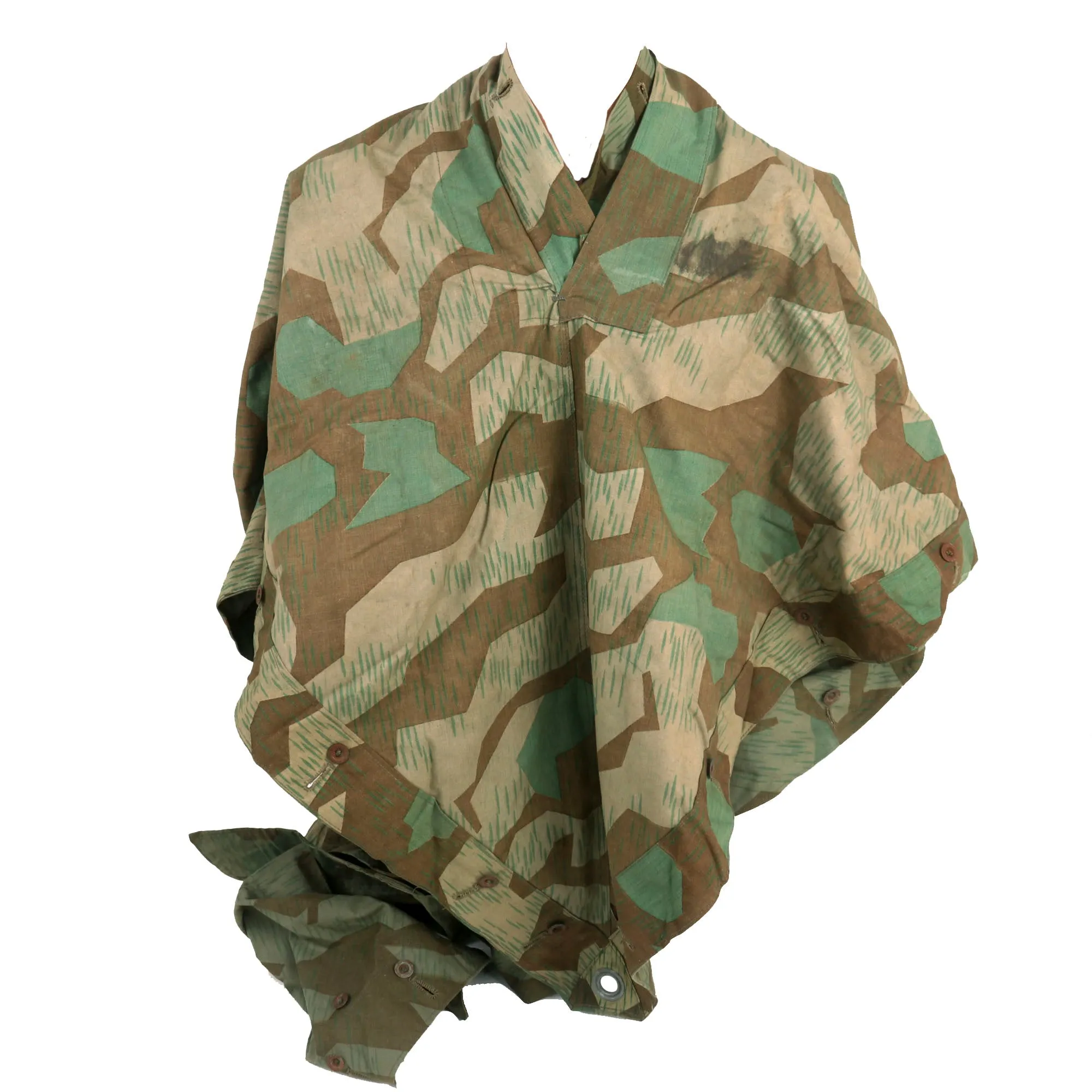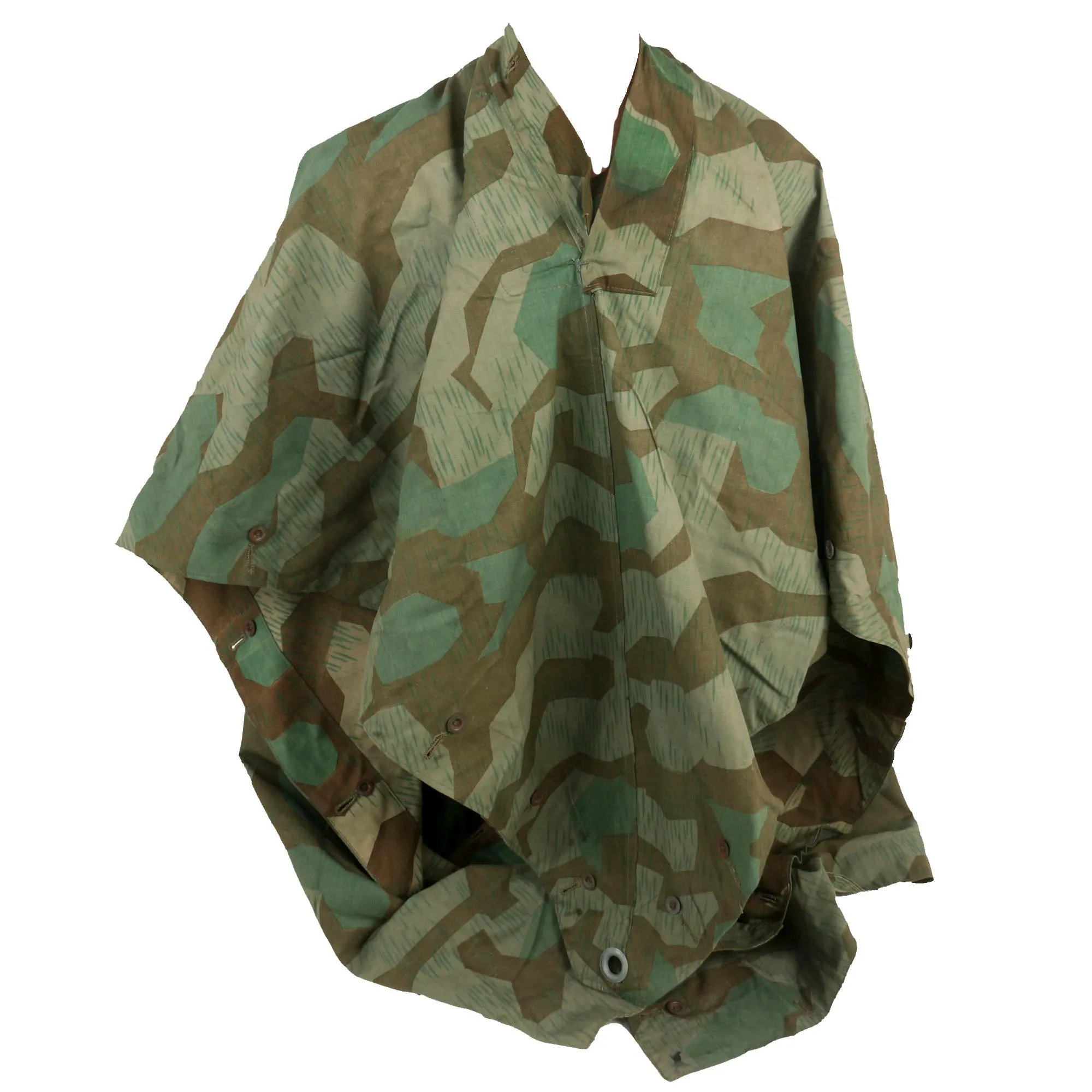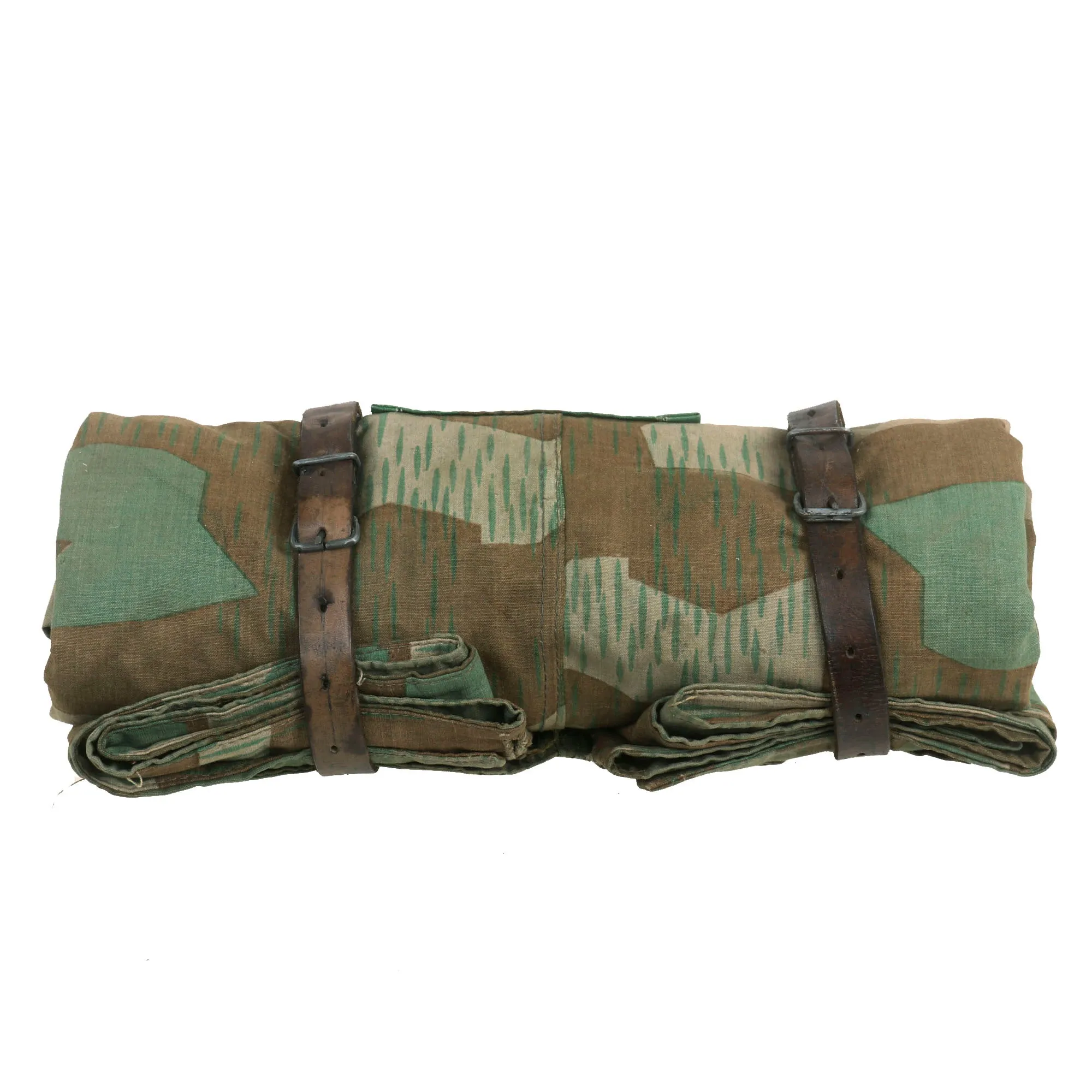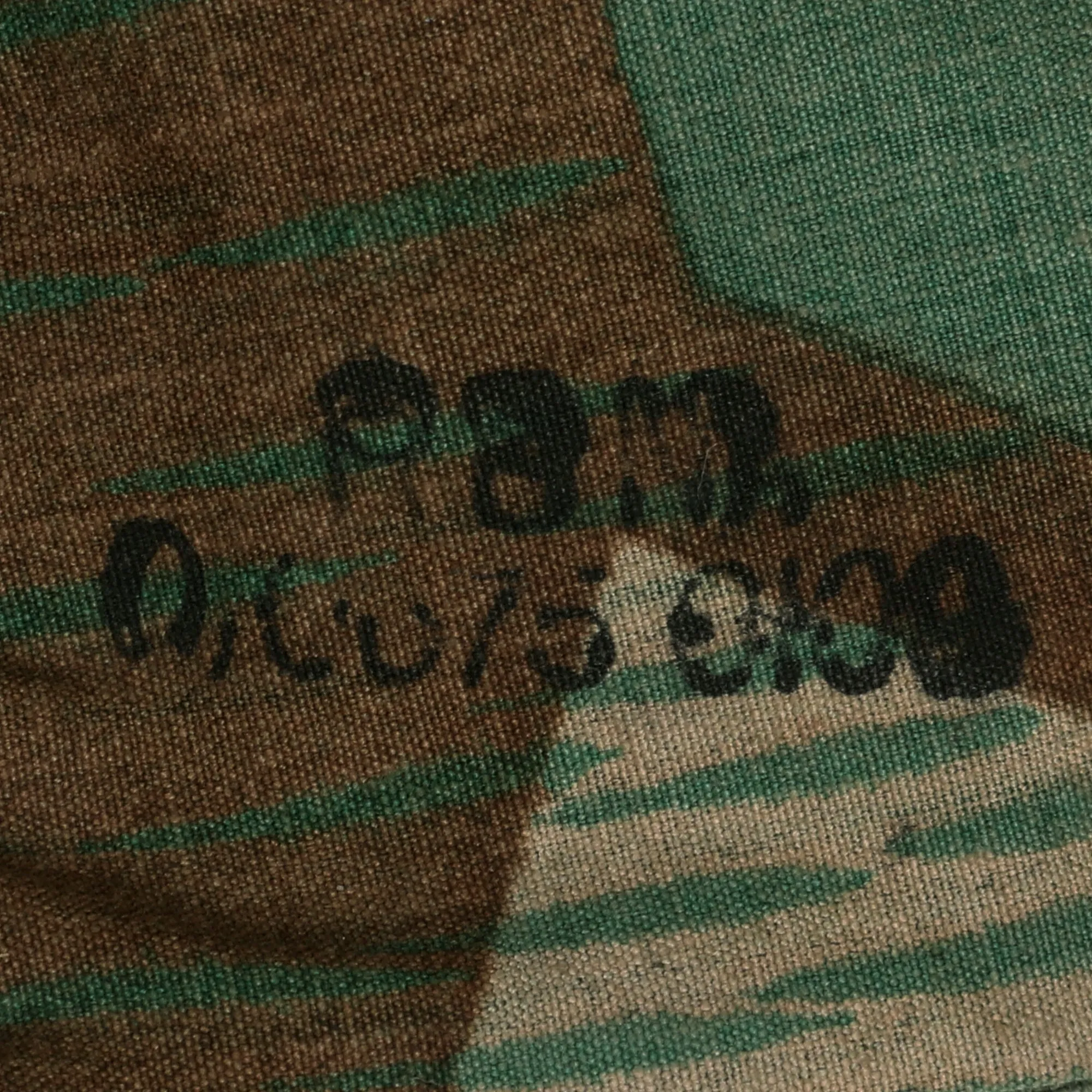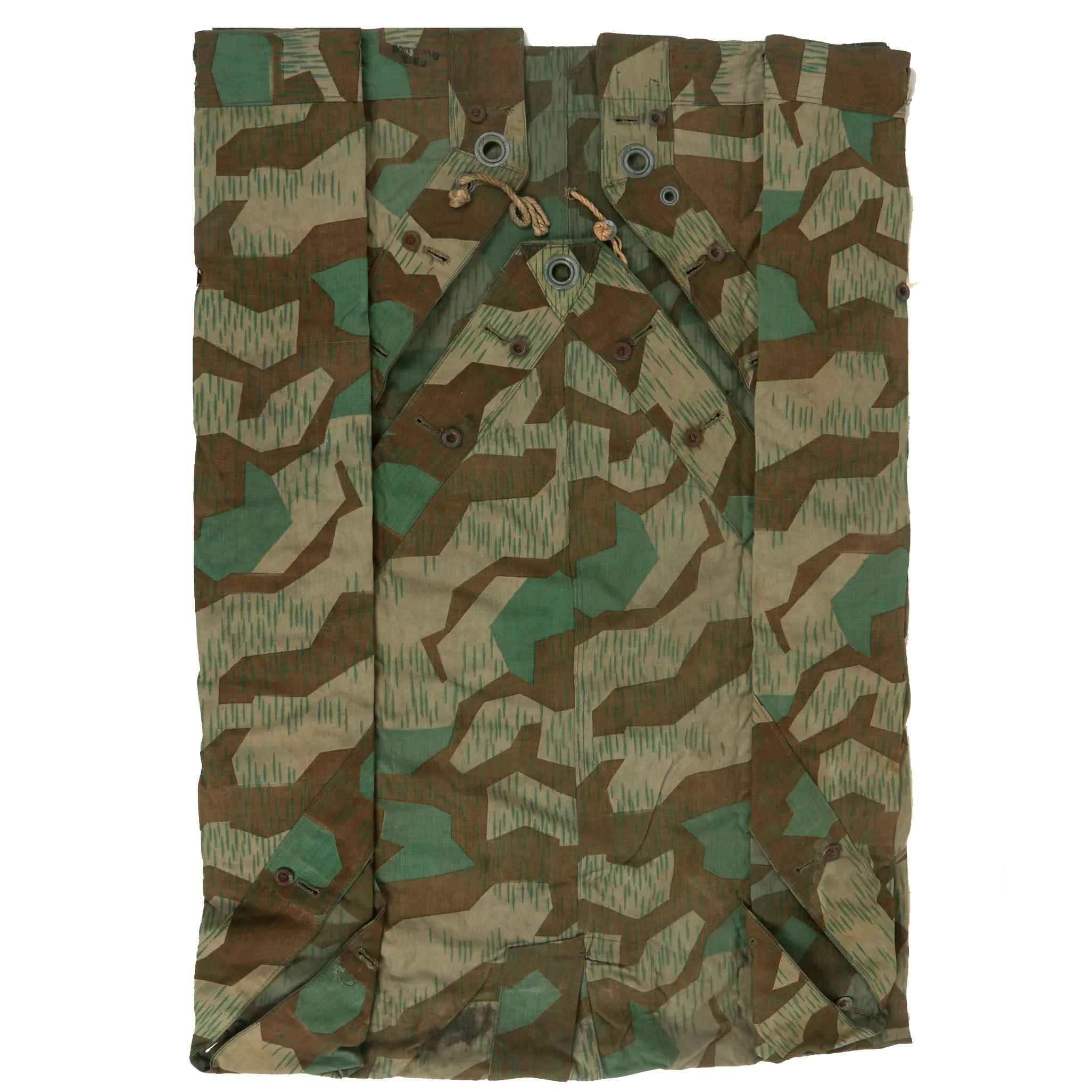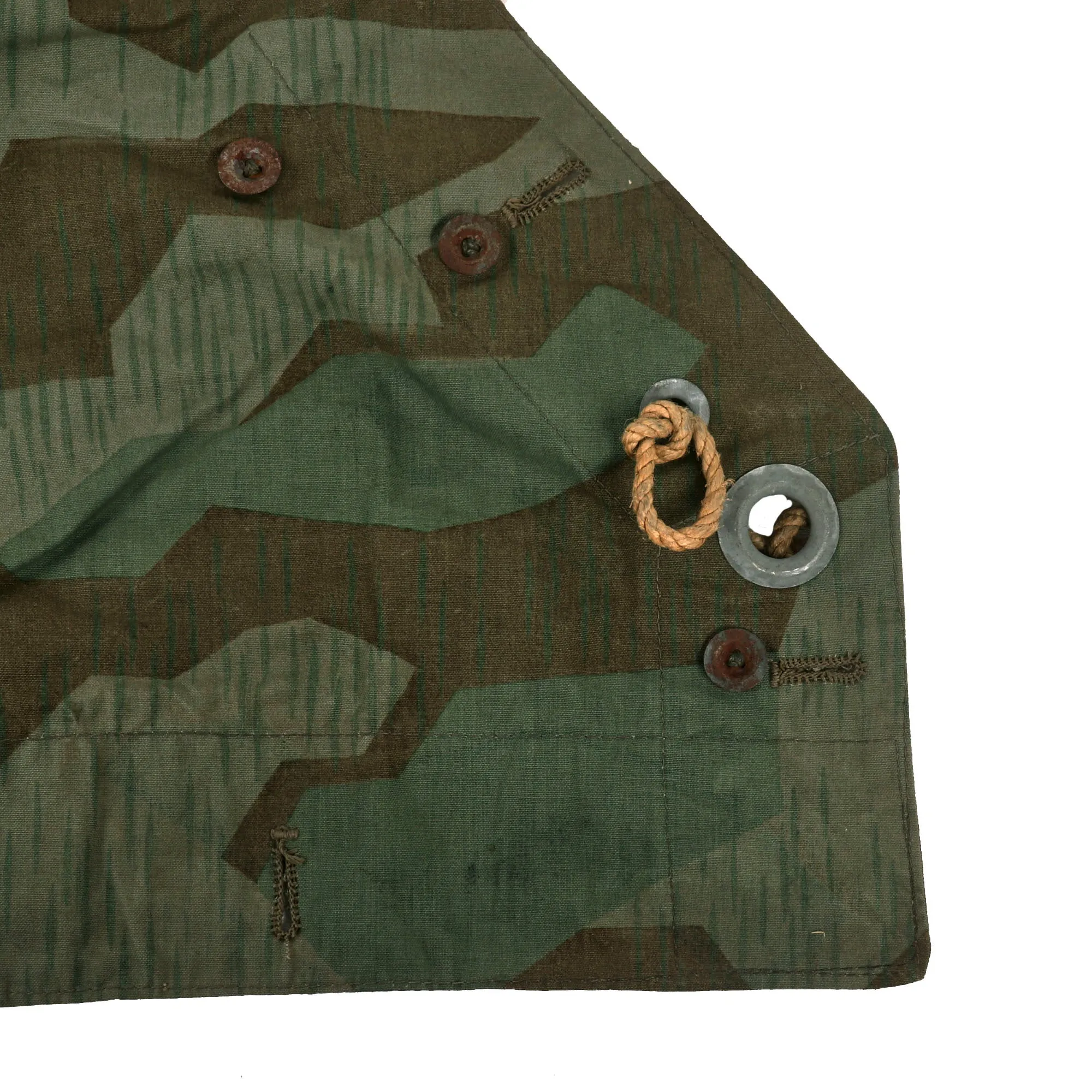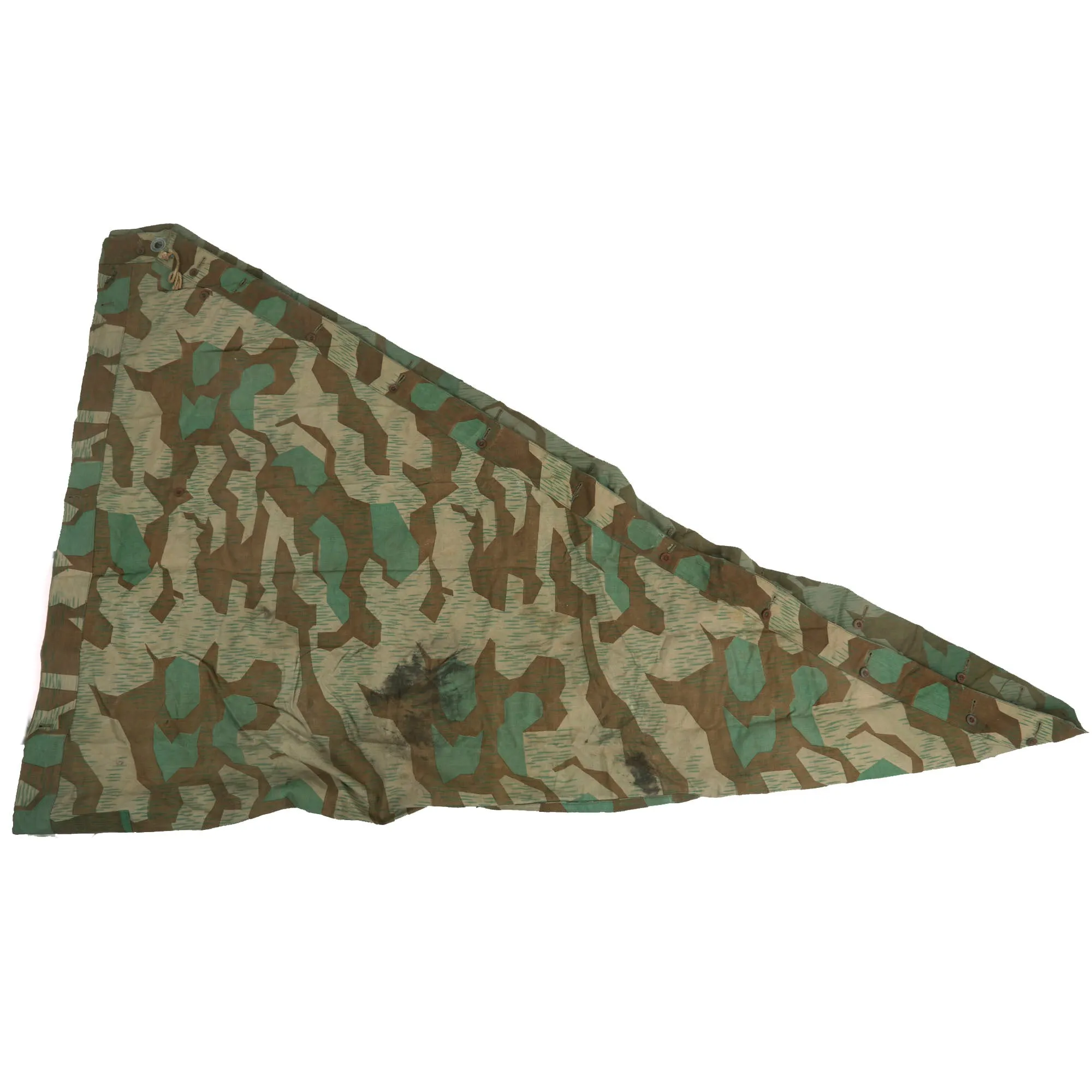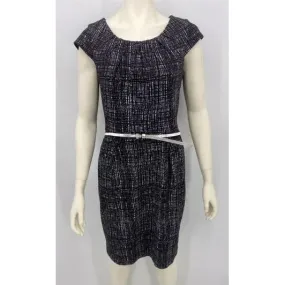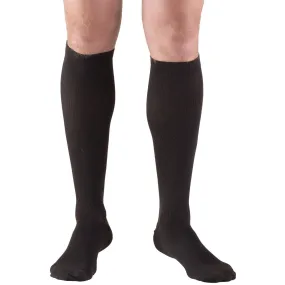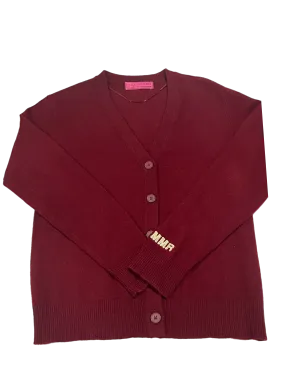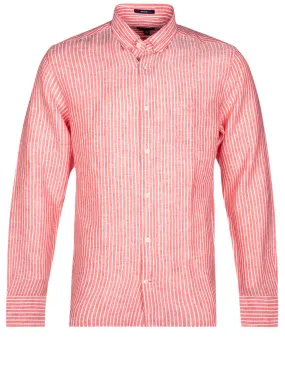Original Item: Only One Available. The German Zeltbahn or Army Tent Quarter was a multi-purpose piece of German army regulation equipment that was issued to Wehrmacht soldiers during WWII. This piece of camouflaged material could be combined with three other to make a proper tent, or other quantities to construct shelters of various sizes, it was also used for camouflage, as a poncho or even a stretcher. This service used example comes in the very attractive reversible German Army Splinter pattern, with about half of the original aluminum buttons still present.
The Zeltbahn 31 was developed in 1931 and found its origin in the square Reichswehr tent. It was made of a water repellent material called Makostoff and is imprinted with a camouflage pattern which is also known as Army Splinter Pattern (Heeres Splitter Muster 31), another phrase used was: Buntfarbenaufdruck (colourful print).
This example is in lovely condition, and looks to have seen moderate use during the war, with some dark stains in areas. There are also no repairs or other signs of post war use that we often see, so this looks to have been put away after the war, and saw no further service. There are a few small tears, and one small button is missing, however all of the large grommets and other parts are still present. There is oxidation on many of the smaller buttons, which look to have had the zinc plating erode over the years. It has a great "been there" look, as it would have looked during WWII.
Most of these that we receive have seen use and cleaning, which unfortunately removes any maker markings they had. This example however still bears a RBNr 0/0675/0109 National Business number on one of the corners!
The included securing straps are brown leather, and appear to have been removed from a pack, as there is a hole that definitely looks like a rivet hole. They are in very good condition, and really help complete the piece.
A lovely RBNr. marked example, complete with some attachment straps for German field equipment. Ready to add to your collection!
NOTE: Mannequin not included.
Reichsbetriebsnummer or RB number (also represented as RB Nr or Rbnr). Before the war, the Germans set up a system for registering and recording the factory information, the Reichsbetriebskartei. This was to help enable machine tabulation of facts and figures. It was from this that the Reichsbetriebsnummer came into being. The Reichsministerium für Rüstung und Kriegsproduktion (Ministry for Armaments and War Production) files survive today in the Bundesarchiv, however, these are only fragmentary. There is a holding file from the working group created by the Office of Machine Reporting in the Armament Office of the Reich Ministry for Armaments and War Production - their main focus was the operations of the industry group for which an economic interest was Armour production. This index provides information on the most important data of the companies covered by it, production profile, operating area, number of employees and the responsible operator.
As a prerequisite for the intended use of the punch-card method in the armaments industry, it was this system which gave rise to the Rbnr. The operating numbers were assigned by the competent local district offices of Machine reporting. (Bezirksstellen des Maschinellen Berichtswesens.) The index is in the form of index cards that are accessible numerically (approximately 14 meters of index cards!). Access to this register is only possible through the naming of this company, stating the place of production. The Reichsministerium für Rüstung und Kriegsproduktion files have multiple entries on the introduction of the factory and also the lot no.
The Rbnr code was used from 1943 onwards and replaced the makers name and address (or company logo) on government contract uniforms, caps and field equipment and knives. It is either rubber ink stamped on cloth or die stamped onto leather & metal items. It has been written countless times that this numeric code system was introduced as a security measure to help mask production locations. This was not the case but it was perhaps, a helpful by- product of the system. It is not unknown to find the Rbnr together with the maker’s info. Had it been a security measure, clearly this practise would have been banned.
So what was the Rbnr? It was a nine digit number and was normally represented thus: RB Nr: 0/000/0000.
The first prefix number could range from 0 through to 9. This number determined the membership of the various groups in the realm of Trade and Industry (Reichsgruppenleitzahl)
• 0 Industry
• 1 Crafts
• 2 Commercial wholesale trading companies
• 3 Banking
• 4 Insurance Companies
• 5 Energy (Electrical companies and such)
• 6 Tourism (Including Hotels, Wine and Mineral Water companies)
• 7 Traffic
• 8 Food Industry
• 9 Not otherwise mentioned groups

